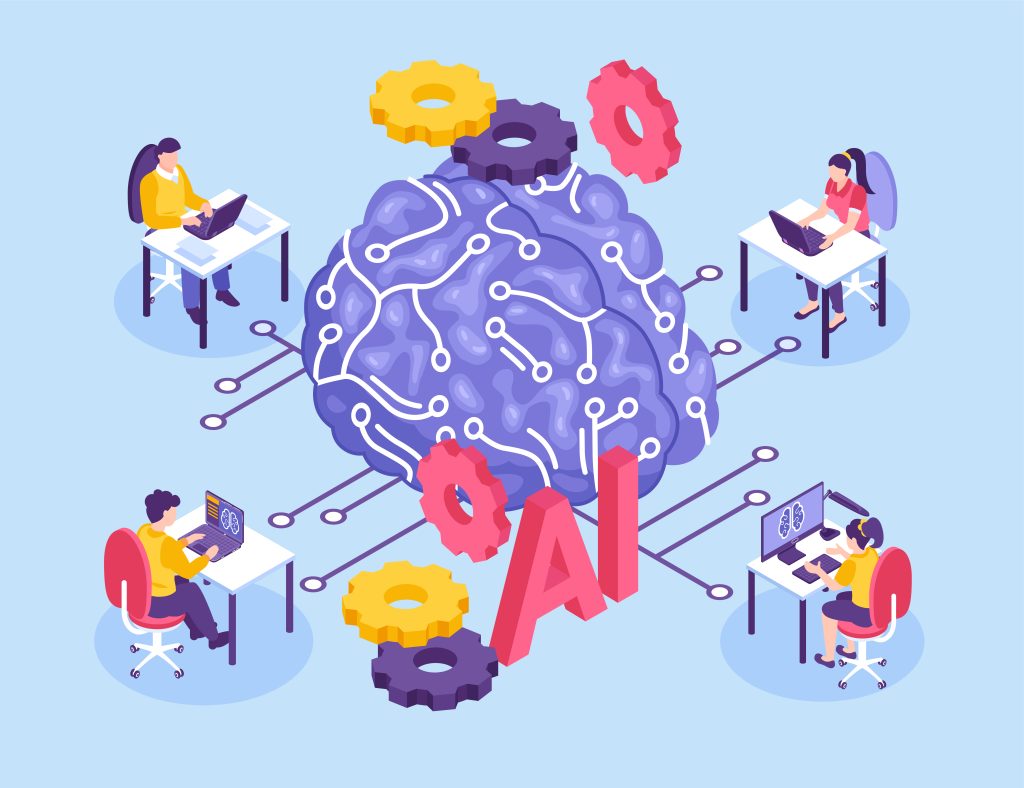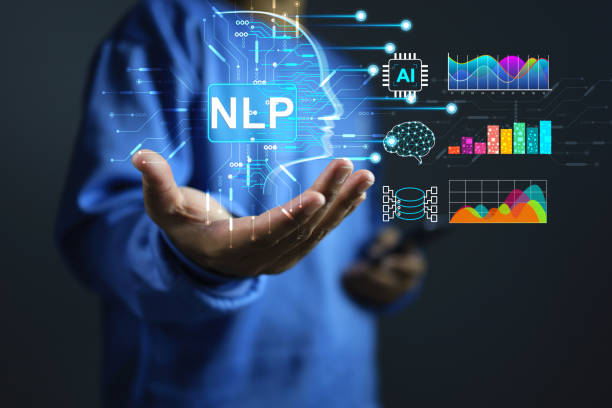Introduction
The Evolution of Personalization
Personalization has come a long way from basic marketing segmentation. Initially, retailers relied on static data such as gender, age, or location to customize campaigns. These strategies were limited, often failing to capture the complex motivations and shifting behaviors of individual consumers.
With the rise of e-commerce and data analytics, personalization began to evolve into more dynamic systems that considered browsing history, purchase patterns, and click behavior. However, even these models were reactive — they responded to what users had done, not what they were about to do.
Hyper-personalization changes this narrative. By incorporating real-time behavioral data, contextual signals (like time of day, weather, or device type), and predictive algorithms, businesses can proactively recommend products and experiences before users even search for them. For instance, an online fashion marketplace can suggest a raincoat to a user in London after detecting a sudden weather shift, or recommend trending fitness wear to a user who recently engaged with health-related content.
The AI Engine Behind Hyper-Personalization
Hyper-personalization isn’t magic — it’s powered by sophisticated AI systems designed to understand human behavior at scale. The AI engine works through a combination of data integration, machine learning, natural language understanding, and continuous feedback loops. Each of these components plays a crucial role in delivering precise, real-time recommendations.
1. Data Collection and Unification
The backbone of any AI-powered personalization system lies in comprehensive and intelligent data collection. In the digital era, every interaction a user has with your brand — from viewing a product and clicking an ad to opening an email or scrolling through your app — generates valuable behavioral signals. These micro-interactions tell a story about what users want, what they value, and what drives their decision-making.
However, these signals often live in silos. Your website analytics, mobile app usage logs, CRM data, and social media interactions might all exist in separate systems that don’t “talk” to each other. That’s where data unification becomes crucial. AI platforms use advanced data pipelines and identity resolution techniques to integrate these fragmented datasets into a single, 360-degree customer profile.

This process involves cleaning, deduplicating, and linking user data across channels, ensuring that every piece of information — from a click to a cart abandonment — is associated with the right individual.
For example, imagine a user browsing eco-friendly home décor on a laptop, liking similar products on Instagram, and later purchasing one via your mobile app. Without unification, these actions might appear as three separate users in your analytics dashboard. But with AI-based data stitching, the system recognizes them as a single individual with a strong affinity for sustainable lifestyle products. The result? Seamless, consistent personalization across every channel — web, app, and email — that mirrors the user’s true interests.
2. Machine Learning and Predictive Modeling
Once the data is organized, machine learning (ML) takes center stage — turning raw data into actionable insights. These algorithms identify hidden patterns, correlations, and behavioral trends that human analysts might overlook. The goal is not just to understand what a user did, but to predict what they are likely to do next.
There are three primary models that fuel these predictions:
-
Collaborative Filtering: This method recommends products by analyzing the behavior of similar users. For instance, if User A and User B have overlapping purchase histories, and User A buys a new camera lens, the system might recommend that lens to User B as well. This model powers classic “Customers who bought this also bought…” features used by Amazon.
-
Content-Based Filtering: This model focuses on the attributes of products themselves. If a user frequently views or buys minimalist furniture made of oak wood, the system learns to prioritize similar listings — perhaps a Scandinavian-style dining table or wooden sideboard.
-
Deep Neural Networks (DNNs): The most advanced models use neural networks capable of analyzing complex, non-linear relationships. They don’t just see surface-level connections; they interpret context, timing, and multi-variable dependencies to offer context-aware recommendations.

For example, consider a travel marketplace. If a user recently booked flights to Switzerland and has been searching for hiking equipment, the AI could automatically recommend outdoor jackets, adventure tours, and winter accessories — anticipating the traveler’s next need.
The strength of predictive modeling lies in its adaptability. It evolves with user behavior and seasonality. When trends shift or preferences change, the model adjusts accordingly — ensuring that recommendations remain timely, relevant, and engaging.
3. Natural Language Processing (NLP)
Data isn’t just numbers — it’s also language. Consumers constantly express intent, emotion, and preferences through search queries, product reviews, and support messages. Understanding this unstructured textual data is where Natural Language Processing (NLP) plays a critical role.
NLP allows AI systems to “read between the lines,” interpreting language with human-like understanding. When a user searches for “lightweight laptop for travel,” the AI must grasp not only the product (“laptop”) but also the underlying intent (“portable,” “good battery life,” “compact design”). NLP helps the system capture these nuances to deliver precisely targeted recommendations that feel personal and purposeful.

Another powerful use case is semantic similarity. NLP algorithms can connect related concepts — such as linking “athletic sneakers” with “running shoes” or “wireless headphones” with “Bluetooth earphones.” This ensures that even when users use varied language, the system still understands and surfaces relevant results.
In essence, NLP transforms messy, human language into structured insights, making AI-driven personalization more natural, conversational, and contextually aware.
4. Real-Time Decision Engines
Speed is everything in personalization. A recommendation that’s delayed is a recommendation that’s lost. Real-time decision engines form the heartbeat of hyper-personalization, ensuring that every interaction a user has with your platform is immediately reflected in what they see next.
These engines use streaming data and in-memory computing to process user activity as it happens. When a shopper clicks on a product, abandons a cart, or lingers on a category, the system recalculates recommendations within milliseconds. This means that a customer browsing smart TVs one minute might start seeing soundbars, wall mounts, and streaming devices the very next second — dynamically updating the digital storefront in real time.
For Sharetribe marketplaces, this capability transforms user experience. No two users ever see the same homepage or recommendation layout. The platform becomes adaptive and self-optimizing, continuously adjusting based on current context — such as user intent, device type, time of day, or even location.

5. Continuous Learning Loop
A true AI personalization engine is not static — it is self-improving. Every action a user takes (or doesn’t take) becomes a learning signal that refines the system’s future performance. This continuous learning loop ensures that the AI gets smarter, more nuanced, and more accurate over time.
When a user clicks on a recommended product, that positive interaction reinforces the model’s confidence in similar recommendations. Conversely, if the user consistently ignores certain types of products, the system adjusts by deprioritizing those categories. Over time, this results in a recommendation model that mirrors each individual’s unique evolution of taste and intent.
For example, a user who initially showed interest in budget-friendly products might, after a few months, start purchasing premium or designer options. The AI detects this behavioral shift and updates future recommendations to match their new purchasing profile — without requiring any manual reconfiguration.
The Impact on Conversion Rates and Customer Experience
The influence of hyper-personalization on business performance is both measurable and profound. AI-driven personalization doesn’t just enhance user experience — it reshapes the economics of engagement. According to multiple industry studies, personalization technologies can increase conversion rates by up to 30–35% and raise average order value (AOV) by as much as 20–25%.
When users encounter products, content, and offers that align perfectly with their interests and intentions, the purchasing process feels effortless. Instead of endless browsing, customers are guided intuitively toward items they genuinely want — shortening decision-making time and boosting overall sales. This frictionless experience strengthens emotional trust and encourages repeat engagement, turning casual browsers into loyal customers.
Higher Conversions Through Relevance
At its core, personalization eliminates guesswork from shopping. Every recommendation feels relevant, timely, and individualized — whether it’s a product on the homepage, a cross-sell item in the cart, or a follow-up email after purchase. This degree of relevance dramatically increases the likelihood of conversion.
Platforms like Amazon are prime examples. Its AI recommendation system accounts for roughly 35% of total sales, demonstrating the direct connection between personalization and conversion success. Similarly, Spotify’s algorithmic playlists and Netflix’s “Because you watched…” feature have revolutionized digital engagement by serving hyper-relevant suggestions that keep users clicking, watching, and subscribing longer.
Increased Average Order Value (AOV)
Personalized recommendations not only drive purchases but also encourage users to buy more per session. By strategically suggesting complementary or upgraded products, AI systems increase basket size and order value.
For example, when a shopper adds a smartphone to their cart, the AI might recommend compatible accessories such as cases, chargers, or earbuds. This kind of cross-selling and upselling feels helpful rather than pushy because it’s rooted in genuine relevance. The same principle applies to travel marketplaces that suggest add-on insurance, guided tours, or upgrades once a booking is made — subtly enhancing user convenience while boosting revenue.

Improved Customer Satisfaction and Loyalty
Hyper-personalization does more than drive short-term conversions; it builds long-term loyalty. When users feel that a platform truly “knows” them — remembering their preferences, adapting to their needs, and anticipating future desires — they are far more likely to return.
AI makes this possible by creating experiences that evolve alongside the customer. For example, a returning user on an online marketplace might find their homepage preloaded with products based on their past browsing history, wishlist items, and even current trends among similar shoppers. This familiarity not only makes the experience smoother but also fosters emotional connection — a sense of being understood.
Enhanced Customer Engagement
Personalization directly translates into deeper engagement. Instead of passively browsing, users interact more — clicking, exploring, and purchasing — because the content they encounter consistently aligns with their needs and desires.
A strong example is Sephora’s omnichannel personalization strategy, which combines AI insights from both online and in-store purchases. Its app delivers personalized product tutorials, shade matches, and skincare recommendations, driving exceptionally high engagement and repeat purchases.
Seamless, Intelligent Experiences
Hyper-personalization extends beyond product recommendations — it shapes the entire customer journey. AI technologies like chatbots, virtual assistants, and predictive search engines create real-time, one-to-one experiences that guide users smoothly from discovery to checkout.
For instance, AI chatbots can interpret user questions (“What should I wear for a beach wedding?”) and instantly provide curated suggestions, size guidance, and styling tips. Predictive search can complete user queries before they finish typing, drawing from prior searches and popular products.
These tools not only make shopping faster and more enjoyable but also reduce friction points like indecision or lack of product information. As a result, customers feel supported throughout their journey — from first click to post-purchase care.
The Ripple Effect on Brand Growth
The cumulative impact of hyper-personalization extends well beyond short-term revenue. Businesses that master personalization see compounding returns across multiple metrics — higher retention, lower churn, better engagement, and improved brand equity.
Personalized experiences make users feel recognized and valued — emotions that traditional marketing struggles to evoke. Over time, these relationships translate into sustained growth, as loyal customers not only buy more but also cost less to retain.
Conclusion
Hyper-personalization is not just the future — it’s the present reality shaping every successful digital business. By combining advanced AI technologies with ethical data practices, companies can deliver meaningful, context-aware experiences to each individual at scale.
Whether you’re an e-commerce retailer, marketplace founder, or SaaS entrepreneur, embracing AI-driven personalization can transform casual visitors into loyal customers. In the age of data and intelligence, the most powerful way to stand out is simple: make every user feel uniquely understood.
FAQ's
1. What is hyper-personalization?
Hyper-personalization uses AI and machine learning to deliver real-time, highly relevant product recommendations based on each user’s behavior, preferences, and intent — far beyond basic personalization.
2. How does AI improve recommendations?
AI analyzes large volumes of user data, identifies patterns through machine learning, and refines results using feedback loops. It learns continuously, making each recommendation smarter and more accurate over time.
3. What data powers AI personalization?
AI uses both explicit data (like user preferences and demographics) and implicit data (such as browsing history, clicks, and purchases) to create a 360° view of each customer.
4. How does it impact conversions and loyalty?
AI personalization can increase conversion rates by up to 35% and boost order value by 20–25%. It also improves customer satisfaction, loyalty, and engagement through more relevant and seamless experiences.
5. How can businesses implement it effectively?
Start by unifying data, integrating AI recommendation tools, applying NLP for intent recognition, enabling real-time updates, and continuously optimizing with A/B testing and user feedback.






